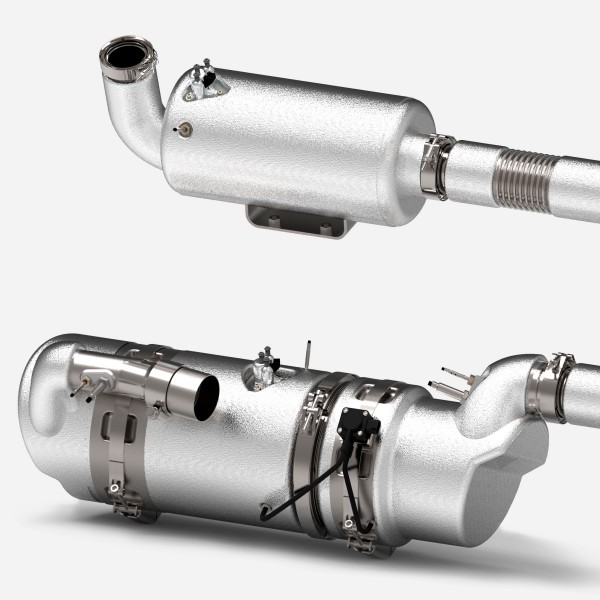Overview
Keep Catalysts Operating Smoothly and Optimize Performance With Superior Donaldson Mixer Technology
Mixers are the heart of an emissions control system – they are the key component that ensures that catalysts function effectively. Donaldson has developed and validated four primary mixer technologies to serve as the foundation for aftertreatment systems. Mixers and selective catalytic reduction (SCR) are typically used on engines above 56 kW / 75 hp.
Features
As an Integrated Part or Standing Alone, Our Mixers Efficiently Optimize the Performance of Aftertreatment Systems
All-in-One Mixer

The all-in-one mixer is an extremely compact, fully integrated aftertreatment system. It contains an annular metallic diesel oxidation catalyst (DOC), an AdBlue® / diesel exhaust fluid (DEF) mixer, an SCRoF, and SCR and a clean up catalyst (AMOX). The patented donut-swirl mixer efficiently decomposes and distributes the AdBlue / DEF exhaust gas mixture prior to the close-coupled SCR face. The annular design retains the exhaust gas heat to optimize SCR performance and minimize the potential of deposit formation. The downstream SCR substrates can be an SCR + SCR / CUC (cleanup catalyst) or an SCRoF (on filter) + SCR / CUC, depending upon the application requirements.
Axial Mixer

The axial mixer is a fully integrated aftertreatment system in a compact design. It has a cylindrical mixer section between two conventional ceramic substrates. Usually, the upstream substrate is a diesel particulate filter (DPF) and the downstream substrate is a SCR. The patented mixer uses a swirl pattern to efficiently decompose and distribute AdBlue / DEF exhaust gas mixture in a small space prior to the SCR face. The cylindrical design retains the exhaust gas heat to optimize SCR performance and minimize deposit formation potential.
Stand-Alone (In-Pipe) Mixer
Stand-alone mixers are often used when the design calls for a modular approach, with multiple smaller components in the emissions control system connected but separate from one another. In this approach, the system is designed to perform with both short and long connection pipes, and therefore a high level of robustness in mixing performance is required. In-line mixers can be scaled to various sizes, for engines from 56 kW / 75 hp up to 560 kW / 750 hp.

Articles
Resources













